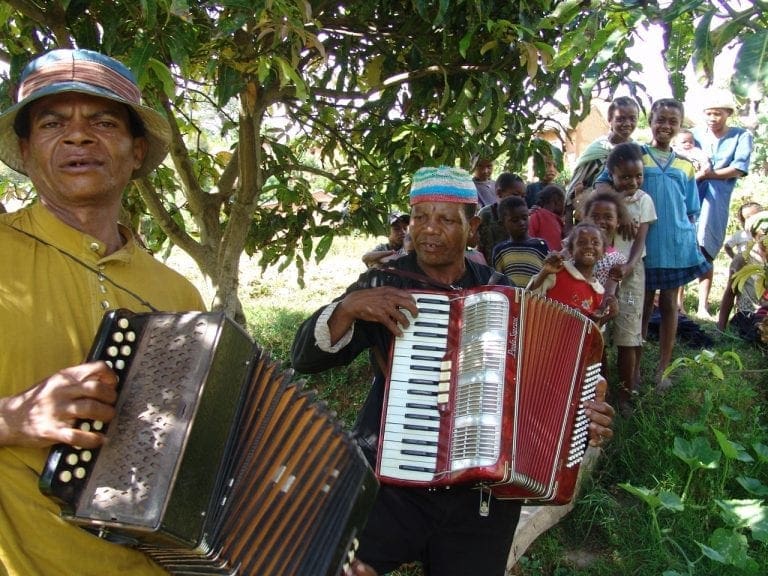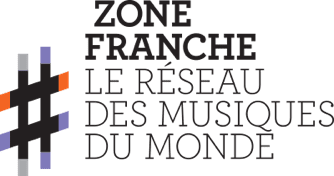There was a need in the early 19th century to invent a new musical instrument that imitated the human voice. The weakening of the nobility in Europe and the emergence of a powerful bourgeoisie in the middle of the Romantic period influenced both the arts and music.
Instrument makers and scientists all over Europe started trying to make this new and revolutionary musical instrument, firstly using strings and reeds made simply from reeds, before doubling them and eventually trying pipes like those used in organs, but nothing seemed close enough to the voice.
Chinese instruments that produced music using a “free metal reed” then sprang to mind.
These had been discovered by two Jesuits, the first in his Traité d’harmonie Universelle [Treaty of Universal Harmony] (1636), and in particular by Père Amiot, who had set out to evangelise “savages” in China and fallen under the spell of the ancient culture of the Middle Empire. He published a book, Mémoires sur la musique des chinois tant anciens que modernes [Memoirs of Chinese Music Ancient and Modern] (1779) and sent two exquisitely made shengs, mouth organs, to his French patron.
Sheng
Laos also has its own variety of “mouth organ”, the khen.
Bouseung Synanone Laotian khen
This was remembered 150 years later amid a real rush to make an expressive instrument. A great many musical inventions came into being and dozens of patents were filed. The most successful was that of a Viennese piano maker originally from Armenia, who filed a patent for an “accordion” in 1829.
The long-awaited instrument had finally arrived! It was to be in Paris – under the definitive name accordion – that this instrument took off, with its so-called romantic version in the hands of a great “priestess”, Louise Reisner, who, until the 1870s, played her accordion in salons across the French capital at the height of Romanticism and even at the opera house, causing young men to faint on hearing such a celestial voice.
While in France the accordion was delighting bourgeois Paris salons, Paolo Soprani and Mathias Hohner – in Italy and Germany respectively – perfected the instrument and introduced, Hohner, in particular, formidable distribution structures and “marketing”, with which they would achieve astonishing success.
Without realising it at the time, they were preparing to conquer popular music across the world.
Few countries would escape this new instrument, with the exception perhaps of black Africa, which, at the turn of the 19th and 20th centuries saw a vogue for the harmonica, also manufactured and distributed by the Hohner firm.
Cousins called the concertina and bandoneon were introduced into popular traditions left untouched by the accordion.
The latter became diatonic then chromatic, with button keyboards or piano keys. Within just a few years, the music of people all over the world would be sung using the free reeds – “anches libres” in French – of a new musical instrument.
This article is a partial overview of some of the traditions that I hope will provide inspiration for discovering others.
Music has always been a wonderful vehicle for discovering other cultures and the accordion is certainly one of the most surprising, both in terms of the path it has taken and its spontaneous integration into the great concert of music played by people from all over the world.
The accordion is heard in few places in sub-Saharan Africa, but in South Africa the concertina – invented in 1829 by the Englishman Charles Wheatstone under the name of the Italian manufacturer Bastari – became very popular in Zulu communities. The tribes considered it a “means of transport”! As Johnny Clegg described it in October 1980 when talking about his thesis at Rhodes University, “The music of Zulu immigrant workers in Johannesburg: A focus on the concertina and guitar”, concertina players set the marching pace with their music and cadence to allow columns of men from each village to reach the mines several kilometres away.
Zulu concertina
Madagascar is unquestionably a country of accordions of all kinds: chromatic button keys, diatonics, piano keys (the piano key accordion was invented in 1842 by Monsieur Bouton! [Button]) and even concertinas. Thousands of musicians draw sounds from their reeds. The instrument arrived in the late 19th century courtesy of Malagasy sailors who had travelled all over the world.
Today, the country’s poverty means that its instruments tend to be in very poor condition, but locally acquired skills allow musicians to play instruments patched up by incredible repairers.
In France, this music from Madagascar was discovered thanks to the wonderful Régis Gisavo, whose style and rhythms brought fresh blood to the accordion in Europe.
We should also remember two musicians who passed away at too young an age: the radiant Jean-Donné Ramananerisoa, who was part of the Ny Malagasy Orkestra, and the magnificent left-hander Jean-Maryse Rabesiaka, known as Médicis.
Médicis
On the Grande Île tens of thousands play this bellows instrument, which replaced the traditional valiha, for dancing, weddings and burials.
The accordion often becomes the symbol of a displaced community. As boasted by Mathias Hohner’s advertising at the start of the 20th century to highlight the qualities of the accordion: “Not heavy, not expensive and always right”. Mexican immigrants to the United States, mainly in Texas, quickly adapted it to their traditional music by creating a new hybrid style: Tex-Mex. The Jiménez family, of which Flaco is the star, play on their Hohner 3-row diatonics.
Flaco Jiménez
https://www.youtube.com/watch?v=gK1OIuTNsI8
In Louisiana, accordion models vary and are known as melodeons: they have only one row on the right hand and two basses on the left. Earlier musicians such as Nathan Abshire or the fantastic Bee Fontenot made it the musical instrument of “America’s French”. On his chromatic piano key model, Clifton Chénier invented the Creole version of Cajun music: Zydeco. “Let the good times roll”, he said and the accordion is their symbol.
Nathan
Bee
https://www.youtube.com/watch?v=cTKg_G2V5j0
Broussard
The accordion instilled its rhythms across the Caribbean and South America: in Colombia with the vallenato and in Santo Domingo with the merengue, which has its own version of Yvette Horner in the colourful Féfita la Grande.
Féfita la Grande
https://www.youtube.com/watch?v=dL3DQAE00aU
The north of Argentina has the chamamé, brought to France by Raul Barboza among others. In the early 20th century, Argentina would see the birth of a new popular urban music: tango, to the sound of the bandoneon, also from Germany.
Argentine bandoneon
Meanwhile, forged by the meeting between two waves of immigration (one internal – from the Auvergne – and the other from the south – Italy), the musette and the java were born in Paris, codified (some would say invented) by a man from Tours of uncertain parentage: Émile Vacher.
Even on Rodrigues Island, just 18 km by 8 km, cast away in the Indian Ocean almost 600 km east of Mauritius, on this Cinderella of the Mascarenes, there are a few dozen accordionists who have been providing the sound for kwadrils, lavals and segas for more than a century.
Rodrigues
https://www.youtube.com/watch?v=UwupMaINzeg
Diatonic players from Finland, Italy, the Basque country and Ireland make up Samuraï, a surprising and contemporary band inspired by so-called traditional music.
Samuraï
In France, Fixi (François-Xavier Bossard), after playing “rock musette” with his brother in the group Java, now blends his keyboard, reeds and bellows with the reggae of Winston McAnuf.
Fixi
For my part, I keep a special place in my heart for the men and women of Azerbaijan who play, with Eastern accents, the garmon, yet another successful mutation of the bellows instrument.
Azerbaijan
Stay curious, keep your ears open, and this small romantic musical instrument with five keys, invented in the early 19th century, has plenty of other surprises in store.


